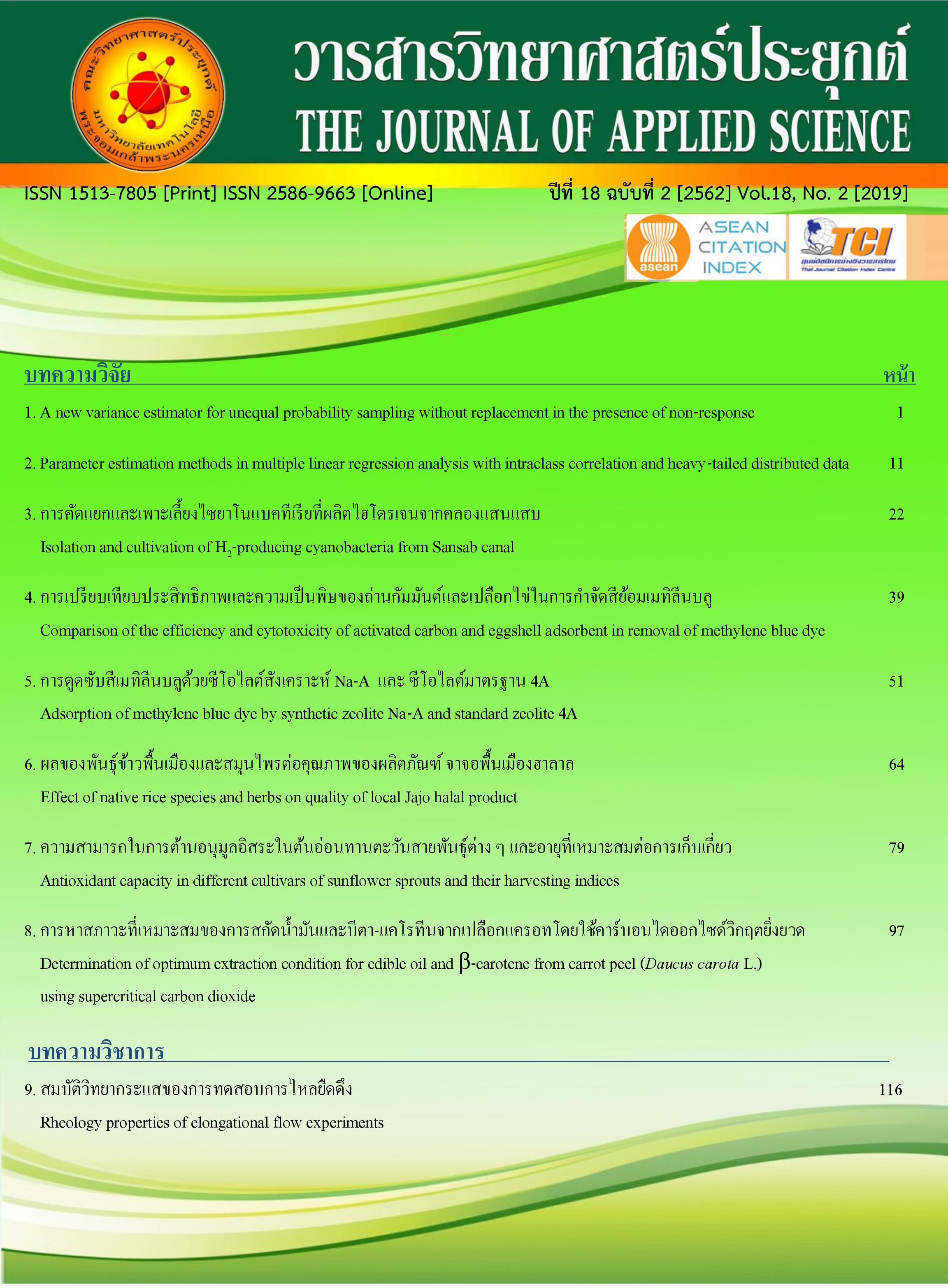Effect of native rice species and herbs on quality of local jajo halal product
Keywords:
local jajo, herb, sensory testingAbstract
Currently, native rice is important and has a high nutritional value, but also the lack of development of products in various forms in the three southern border provinces. The native Ladcheag products were unique in consumption during the housewarming, harvest and raise home. This research aims to study species of rice, the ratio of rice flour and tapioca starch to consumer acceptance, the type and quantity of colored and flavored with herbs on properties and consumer acceptance. Effects of rice varieties, the ratio of rice flour and tapioca starch were observed. Native Ladcheag products were tested for sensory quality. The result found that Majanu rice varieties and the ratio of rice flour and tapioca starch was 80: 20 (by weight) gave the highest preference score of 7.45 (medium) when compared with Sibuguntang rice varieties. The Ladcheag product using three types of herbs, Pandan leaves, Clitoria ternatea and Chrysanthemum at concentration of 10% and 20%. Sensory testing found that 10% Pandan leaves gave the highest average preference score. In addition, the estimation of shelf-life of product in aluminium foil exhibited that samples could be stored up 1 months at room temperature, the detected bacteria were not excess the standards prescribed dose of 1x103 cfu/g. Therefore, the use of rice flour Majanu native species to produce the native Ladcheag and Pandan juice to customize the color and smell which is recognized by the sensory test.


